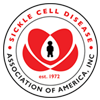Trusted Resources: Evidence & Education
Scientific literature and patient education texts
Incidence and Risk of Delayed Hemolytic Transfusion Reaction in Sickle Cell Disease Patients Based on a Prospective Study
source: American Society of Hematology
year: 2016
authors: France Pirenne, David Narbey, Philippe Chadebech, Armand Mekontso-Dessap, Pablo Bartolucci, Claire Rieux, Marc Michel, Sadaf Pakdaman, Rachid Djoudi, Frédéric Galacteros, Anoosha Habibi
summary/abstract:Background:
Delayed hemolytic transfusion reaction (DHTR) is a life threatening complication of transfusion in sickle cell disease (SCD). This syndrome is underestimated because of a clinical picture that resembles a vaso-occlusive crisis (VOC) and the frequent absence of detectable antibodies. Several retrospective studies have evaluated the frequency of DHTR based on case reports. We conducted a prospective, longitudinal, single center study to determine the incidence of DHTR and the risk of developing DHTR depending on the transfusion regimen: chronic versus punctual.
Methods and patients:
SCD patients aged over 18 years, undergoing a transfusion, were enrolled in this study. A total of 697 transfusion episodes (TE) in 312 patients were included during 30 months. Some patients had multiple TE during the period. The post transfusion outcome of the patients was assessed up to one month after the included TE. DHTR was confirmed based on the rapid disappearance of HbA (> 50% 15 days post-transfusion) associated with two of the following criteria up to three weeks after transfusion: VOC symptoms, dark urine, worsening anemia, increased LDH. Transfusion episodes were divided into chronic (336 TE in 111 patients) and punctual (361 TE in 201 patients). Chronic transfusions were defined as regular transfusions to treat chronic complications or for primary/secondary prevention of complications. Short transfusion program during pregnancy was considered as punctual transfusions if patients were not previously regularly transfused. The study obtained approval of the local Ethics Committee.
read more
Related Content
-
New Sickle Cell Disease Research Shows Improved Patient OutcomesEmerging therapies and promising new ins...
-
Medical Marijuana for Sickle Cell Disease: Results of Two Years of Certification in an Adult Sickle Cell CenterBackground: The hallmark of sickle cell ...
-
Stable engraftment with haploidentical peripheral blood stem cell transplantation in adult patients with sickle cell...The widespread application of allogeneic...
-
MaxCyte and U.S. National Institutes of Health’s National Heart, Lung, and Blood Institute enter cooperative r...MaxCyte, Inc. today announces it has e...
-
Hydroxyurea: The Best Hope for Sickle Cell Anemia Patientshttps://www.youtube.com/watch?v=L_xSgQWj...
-
Progress in pursuit of sickle cell cureBao, in collaboration with Baylor Colleg...
-
Emmaus Medical, Inc. Selects AmerisourceBergen to Support the Launch of EndariTM (L-glutamine oral powder)AmerisourceBergen, a global healthcare s...
To improve your experience on this site, we use cookies. This includes cookies essential for the basic functioning of our website, cookies for analytics purposes, and cookies enabling us to personalize site content. By clicking on 'Accept' or any content on this site, you agree that cookies can be placed. You may adjust your browser's cookie settings to suit your preferences. More Information
The cookie settings on this website are set to "allow cookies" to give you the best browsing experience possible. If you continue to use this website without changing your cookie settings or you click "Accept" below then you are consenting to this.




 +myBinder
+myBinder
